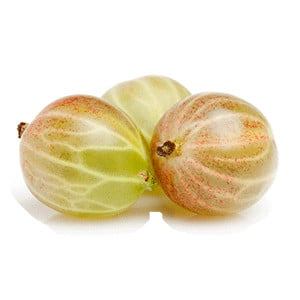Gooseberry

Gooseberry
Ribes uva-crispa
Plant family
Gooseberry family (Grossulariaceae)
Season Overview
Propagating
Planting
Harvest
Harvest
J
F
M
A
M
J
J
A
S
O
N
D
1ST YEAR
FOLLOWING YEARS
Details
Light requirement
Semi-shaded
Water requirement
Moist
Soil
Medium (loamy)
Nutrient requirement
High
Light germinator
Germination temperature
20 - 25 °C (Degrees Celsius)
Plant distance
120 cm
Row spacing
120 cm
Seeding depth
0.5 cm
Instructions
Description
Gooseberries belong to the botanical family of gooseberry (Grossulariaceae). The bush reaches heights and widths of up to 150 cm/59 in. The life of a bush is about 10 years. Its varieties are divided according to the color of the fruit. There are yellow, red and green-white varieties. Green and yellow varieties are usually sweeter and more aromatic. Red varieties are mostly thornless.
Origin:
It is descended from a wild form from Central and Eastern Europe.
Growing tips
The site should be bright, but protected. Between trees or shrubs is optimal. Gooseberries can get sunburn in direct sunlight. The soil should be loose and humus. Depending on the use and variety, gooseberries are picked from late May to July or August. Fruits are formed on the one-year-old side shoots of older shoots. To encourage fruiting, regular pruning is important. After planting in the fall (October to November) or spring, the first pruning is done. Prune the strongest ground shoots by about one-third. Remove all but 6 of the remaining ground shoots. After harvesting, older side shoots are shortened. One-year-old side shoots must be left standing! They will bear fruit the following year. You will get the best harvest if several gooseberry varieties grow next to each other.
Companion Plants
Antagonistic Plants
Diseases
Powdery mildews
Pests
Sesiidae
Schildläuse
Spider mites